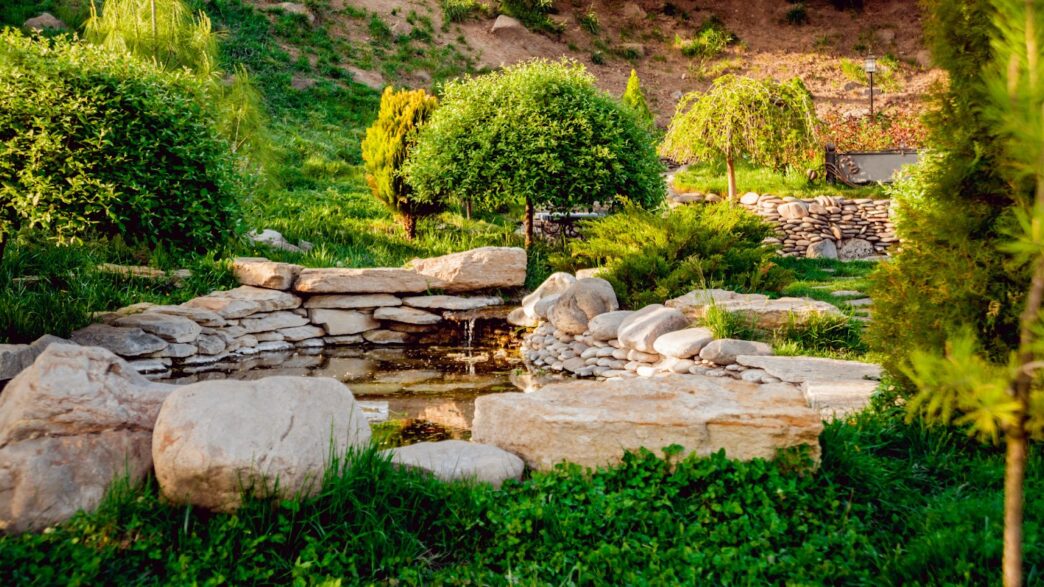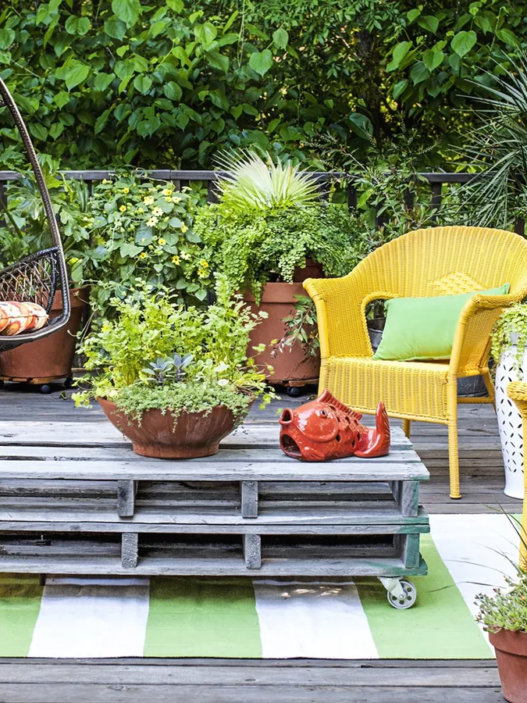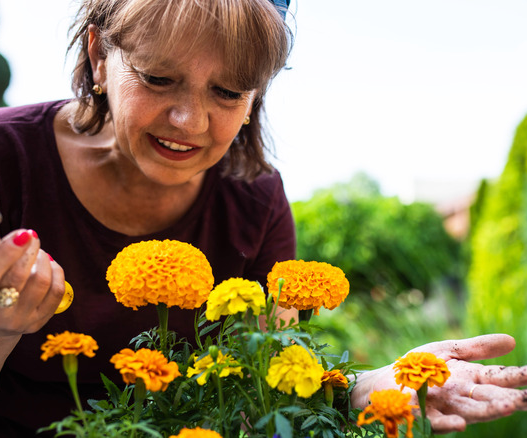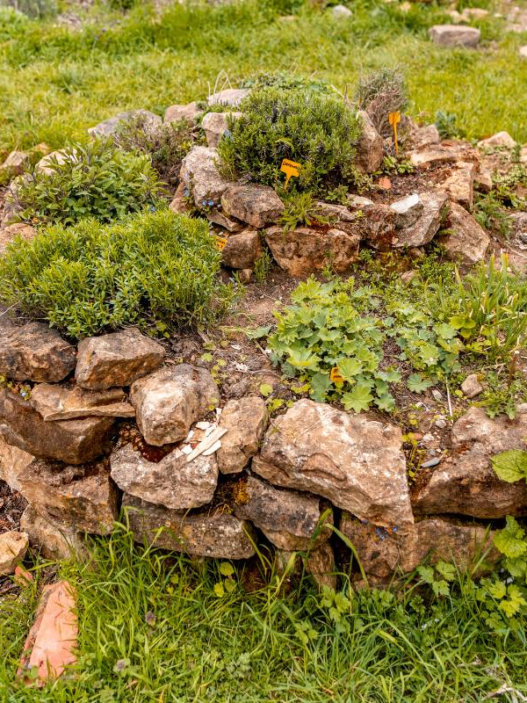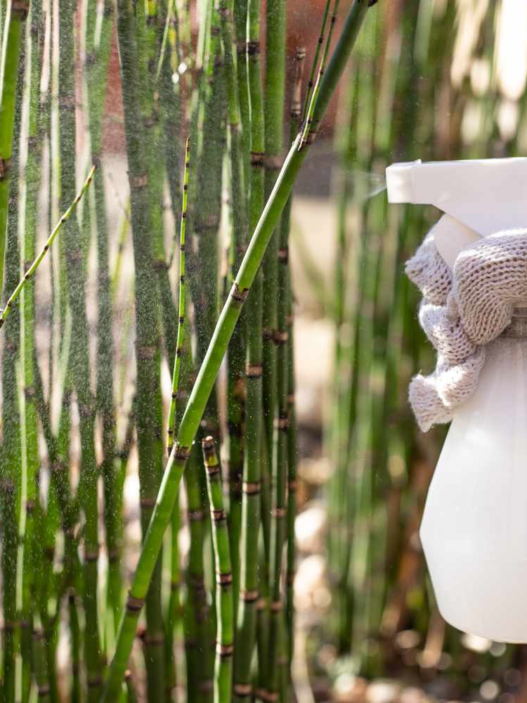Gardens are mirrors, reflecting the tapestry of the world’s flora within their borders. Yet, even the most vibrant garden may lack the exotic whispers of distant shores.
Embracing the horticultural diversity of our planet can transform a homely garden into a celebration of global culture—introducing eye-catching forms, colors, and textures that speak of landscapes far beyond local vistas.
The world in your backyard.
Exploring Asian Gardens
Asian gardens represent a harmonious blend of aesthetics and philosophy, weaving nature into artful compositions that invite contemplation. Rather than merely replicating the flora from Asia, these serene spaces emphasize balance, tranquility, and the flow of energy—concepts central to the Asian sensibility.
Elements like water features, stone lanterns, and sinuous paths mimic natural landscapes, while meticulously pruned trees and shrubs, such as bonsai or Niwaki, create focal points that guide the eye and calm the spirit.
The Balance of Zen Gardens (Japan)
Zen gardens epitomize tranquility and minimalism, capturing the essence of nature’s simplicity through meticulously curated landscapes.
Elevate your garden game with the power of raked gravel, stones, and strategically placed greenery. These elements work in harmony to create an atmosphere of tranquility and contemplation. Don’t settle for a lackluster outdoor space.
Make a statement with a garden that demands attention and inspires awe. The gravel’s patterns symbolize water ripples, fostering an aura of fluidity amidst stillness.
Incorporating elements like bamboo fences and moss-cloaked stones can bring the understated elegance of a Japanese Zen garden straight to your home, inviting daily moments of introspection amid a backdrop of purposeful minimalism.
Tropical Inspirations from Southeast Asia
The lush, vibrant landscapes of Southeast Asia offer exhilarating possibilities for gardeners seeking an exotic escape.
Here’s how you can incorporate elements of this vibrant region:
- Vibrant Flora: The region is known for its lush, vibrant landscapes, featuring lively palms, fragrant frangipanis, and the stunning bird of paradise.
- Water Features: Incorporate serene koi ponds to add a tranquil element to your garden.
- Layered Vegetation: Embrace vertical gardening with layers from low ferns to towering banana plants, creating a dynamic visual tapestry.
- Diverse Plant Life: A Southeast Asian garden thrives on the diversity of its plants—orchids, gingers with fiery hues, and lush philodendrons enhance the garden’s textural richness.
- Natural Materials: Use bamboo and teak to construct trellises, walkways, and borders, adding a functional yet authentic tropical aesthetic.
- Shaded Seating Areas: Install structures like Thai salas or Bali bales for shaded seating that offers repose and blends seamlessly with the garden, enhancing the communion with nature.
European Garden Elegance
European garden design conjures images of manicured lawns, geometrically precise hedge mazes, and regal statues—a narrative of control and grace. A well-trimmed boxwood hedge becomes the frame, while parterres of flowering annuals and perennial borders paint the colorful story within.
In this tradition, topiary artistry takes center stage, with plants meticulously sculpted into ornamental shapes that evoke a sense of order and timeless sophistication. Antique urns, sundials, and burbling fountains are strategically placed, punctuating the green expanse and yielding an ambiance of classical European splendor that any gardener can aspire to replicate.
The Formality of French Gardens
French gardens epitomize precision and symmetry, reflecting a profound harmony and meticulous grooming. They reveal humanity’s capacity to shape and refine nature into an emblem of cultural sophistication and artistry.
Graced by linear pathways that guide one through a thoughtful tapestry of greenery, these spaces are canvases for geometric elegance. Lavish topiaries and neatly clipped hedges delineate spaces, creating outdoor rooms that invite contemplation. Each carefully positioned plant contributes to the grand visual narrative.
Central to this philosophy is the axis, a line that anchors the garden’s layout, often extending from the residence it complements. Aligning flowerbeds, trees, and walkways along this axis imposes a sense of order. This focus on linearity and perspective accentuates the grandeur of the surrounding architecture.
Incorporating elements like reflecting pools, precisely sculpted shrubs, and ornate statuary, these gardens are theaters of nature’s refinement. They demonstrate how a well-conceived plan can transform greenery into an elegant extension of the living space.
Cottage Gardens of the English Countryside
Embedded in rolling meadows and bounded by rustic fences, these gardens whisper stories of tradition, invoking an intimacy and charm that’s quintessentially English. Adorned with rambling roses and foxgloves, they invite a casual exploration.
Each corner reveals a new tableau, alive with buzzing bees and butterflies. Amidst the flora, a tapestry of colors and textures merge, creating harmony without strict formalities.
Diverse, yet thoughtfully curated plants sit cheek by jowl in this verdant retreat, with hollyhocks standing guard (Alcea rosea being particularly reputable for their stately presence) and cottage pinks nestling below.
Paths meander, fashioned from local stone or brick, guiding visitors past edibles and ornamentals alike, where lavender often borders the journey, its scent a constant and soothing balm.
Inspiration from the Americas
Gardens around the world offer a rich tapestry of styles, each reflecting its unique cultural backdrop and ecological practices. From the vibrant, color-saturated courtyards of Mexico to the deeply sustainable traditions of Native American gardens and the innovative urban rooftop spaces of Austin, these garden styles invite us to blend aesthetics with functionality.
Embrace the bold hues and artisanal elements characteristic of Mexican gardens, integrate the ecological wisdom of Native American planting philosophies, and adapt the space-saving innovations of Austin’s rooftop gardeners to enhance your own outdoor spaces.
The Vibrant Colors of Mexican Gardens
Mexican gardens burst with exuberant shades and varying textures, a testament to a nation’s love affair with color and life. From the intense blues and purples of salvias to the hot pinks of bougainvillea, these spaces exude a bold energy.
The focal point often lies in a courtyard, where a harmony of native plants like marigolds, zinnias, and sunflowers create a canvas as captivating as the country’s famed murals. Artisanal elements, such as hand-painted pottery and intricately carved woodwork.
To authentically emulate this style, incorporate heat-tolerant and drought-resistant plants, as Mexico’s climate dictates such hardiness. You might consider a palette that reflects the natural landscape and the vibrant culture, with shades of ‘Aztec Gold’ marigolds, ‘Fiesta Del Sol’ Mexican sunflowers, and ‘Torch’ Mexican sage.
Native American Gardening Philosophies
Native American Gardening Philosophies reflect a deep reverence for the earth, focusing on sustainability and ecological balance.
Here’s how these age-old practices can guide modern gardening:
- Respect for the Land: Indigenous horticulture is more than planting; it’s about stewardship and maintaining balance, honoring the interconnectedness of ecosystems.
- The “Three Sisters” Method: This sophisticated polyculture system uses corn, beans, and squash that support and nourish one another, exemplifying sustainable farming by optimizing space and resources.
- Corn provides a natural trellis for beans.
- Beans fix nitrogen in the soil, enhancing fertility.
- Squash shades the soil, conserving moisture and deterring weeds.
- Companion Planting: Extends beyond productivity; it fosters symbiotic relationships between plants, enhancing garden resilience against pests and diseases and promoting biodiversity.
- Alignment with Natural Cycles: Gardening activities are timed to seasonal cycles and lunar phases, ensuring that sowing and tending to crops align with nature’s optimal conditions.
- Ecological Consciousness: These practices teach humility and collaboration with nature, encouraging modern gardeners to integrate these principles for sustainable living and environmental preservation.
Rooftop and Balcony Gardens in Austin
Austin’s urban gardeners are transforming rooftops into vibrant ecosystems, artfully crafting spaces that marry aesthetics with sustainability. Enclosed by skyscrapers, these gardens beckon to pollinators, creating unexpected havens of biodiversity.
Compact greenery thrives above the city’s hustle, offering reprieve amidst concrete labyrinths. Austinites maximize their high-altitude flora with container gardens, vertical plantings, and trellised vines.
Relishing in Austin’s sunny climate, rooftop and balcony gardeners adeptly choose heat-tolerant and drought-resistant plants. Using sustainable practices like composting and water-conserving irrigation systems, they bring a touch of the verdant Hill Country to urban abodes. For those staying in Austin hotels with a kitchen, these gardens can provide fresh, locally grown herbs and vegetables.
These elevated gardens stand as a testament to the ingenuity and passion of Austin’s gardening community. In spaces often deemed too small or unconventionally shaped, growers implement imaginative solutions such as modular planter systems and green roofs.
Practical Tips for Integrating International Flair
Seeking inspiration from Italian giardini, include terracotta pots and stone sculptures to invoke a Mediterranean ambiance in your garden sanctuary. Incorporate aromatic herbs like rosemary, sage, and basil for a sensory journey.
To evoke the serene balance of a Japanese kare-sansui, integrate elements such as sand, rocks, and meticulously pruned shrubs or bonsai. The strategic use of space and simplicity can instill a sense of zen even in smaller garden plots, bringing mindfulness to your horticultural haven.
Consider the vibrant mosaic of a traditional British cottage garden—intermixing perennials and annuals for a tapestry of continuous bloom. Peonies, foxgloves, and delphiniums offer height and drama, while geraniums kiss the ensemble with color.
Choosing the Right Plants
Selecting the perfect flora is crucial for an internationally inspired garden.
Here’s a guide to help you choose plants:
- Assess the Climate: Match your plant choices with your local climate conditions.
- Consider Maintenance: Opt for plants that align with your gardening expertise and available time.
- Seasonal Planning: Choose a mixture of plants to ensure year-round interest and bloom.
- Cultural Significance: Include plants with historical or cultural relevance to the area you’re emulating.
- Harmonious Design: Select plants that complement each other in color, texture, and growth habit.
- Wildlife Support: Incorporate plants that provide habitat and food for local wildlife. Plants serve as the very essence and soul of your garden’s global story.
Designing Your Layout
Envisioning your garden’s layout is akin to painting a landscape on a canvas, where each plant is a deliberate stroke of the brush.
Here’s how you can create a captivating garden layout:
- Paths and Bed Shapes: Design paths and bed shapes to invite exploration and wonder, encouraging movement and discovery.
- Elevation Considerations: Add dimensionality with terraces or sunken beds, creating captivating layers and depth.
- Sight Lines: Ensure there are captivating vistas from various vantage points within your garden, aligning sight lines for maximum visual impact.
- Flow and Navigation: Coordinate the flow of your space with an intuitive layout that guides visitors through your living mosaic of global flora.
- Structural Elements: Introduce structures reminiscent of your inspirational region, such as arbors or stone pathways, to enhance the immersive experience.
- Functionality and Aesthetic: Fuse functionality with aesthetic charm by creating areas for repose or contemplation, where the fusion of culture and botany can be quietly admired.
- Creating Sanctuaries: Aim to forge not just a garden but a sanctuary that bridges the botanical richness of diverse regions with the intimate scale of your personal space, providing a retreat for the senses and the soul.
Conclusion
As our horticultural journey concludes, remember that your garden is a reflection of both your passion and the global tapestry of nature. It embodies the spirit of distant places and the comfort of home.
Let your garden be an invitation to explore a space where the beauty and knowledge of plants from around the world thrive. It should be a nurturing ground for vegetation and cultural enlightenment, a place where one can embark on a globetrotting journey without leaving home. Remember, “bringing the world to your garden” is about enriching our lives with the diversity of nature’s offerings.

